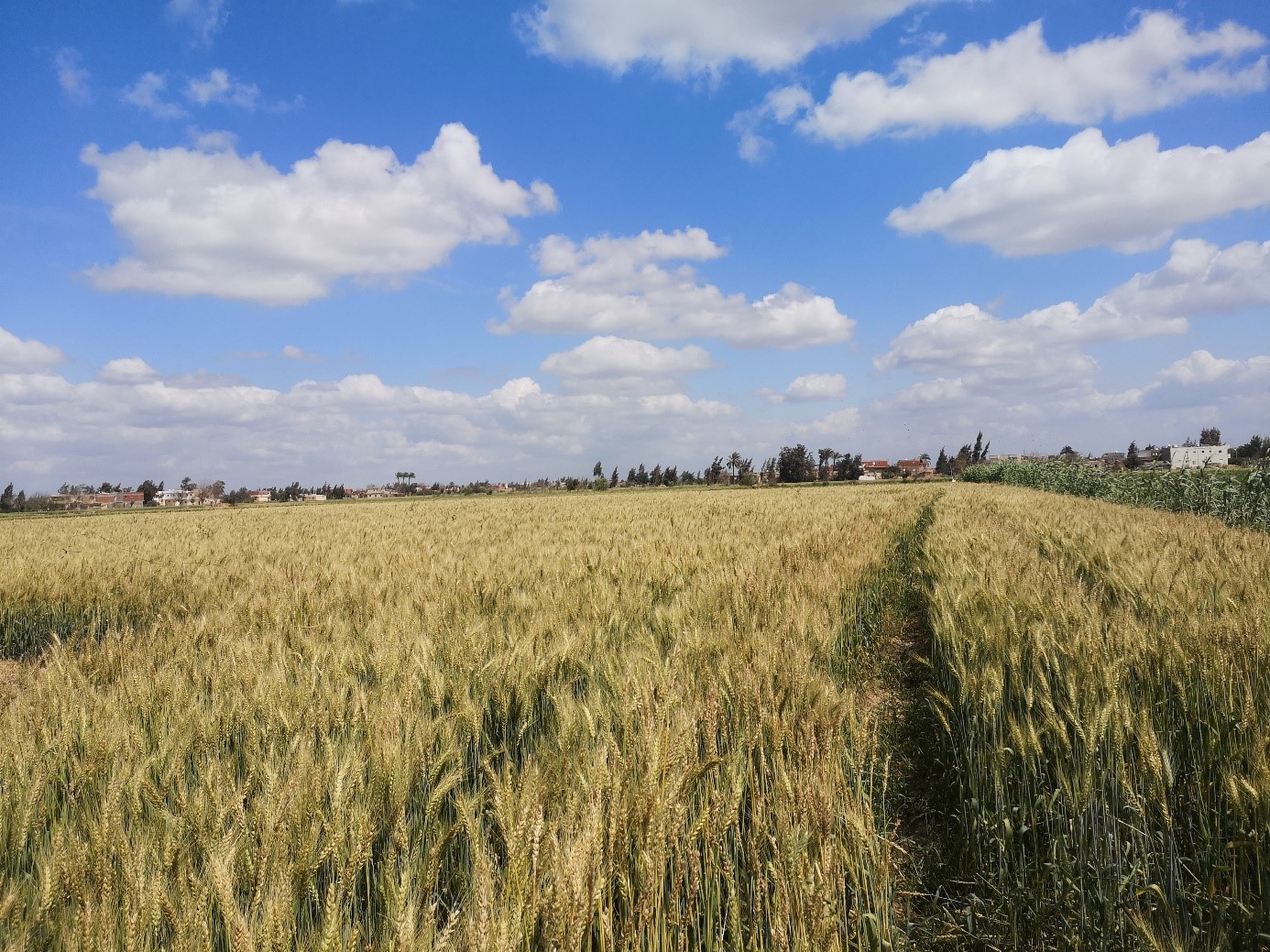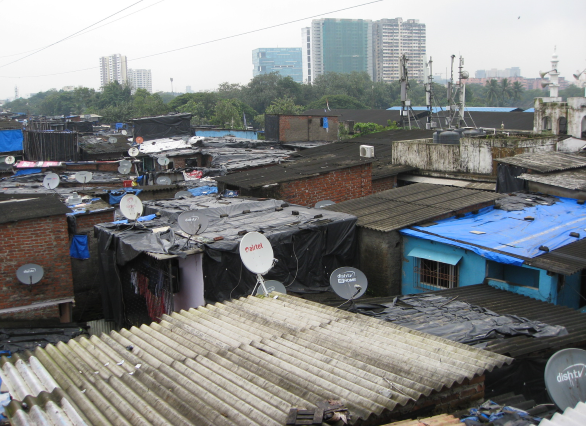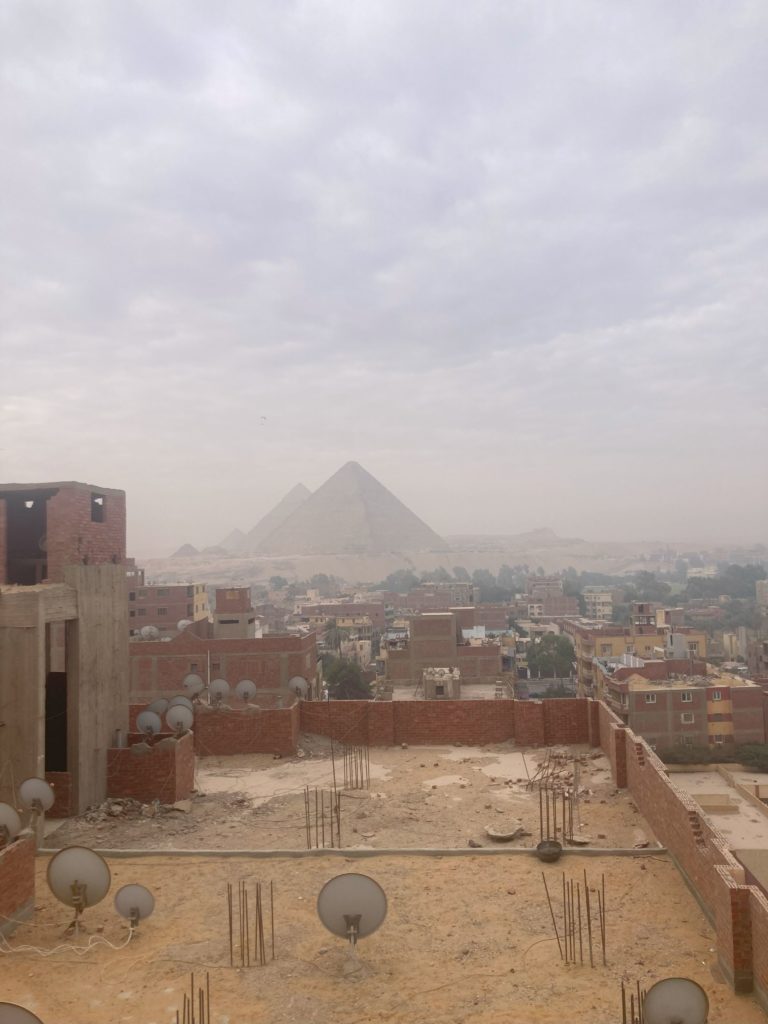Could the Ukrainian war spark another revolution in Egypt?
Blog post by Ahmed Abdalla, a doctoral researcher at ZEF and the Right Livelihood Campus Bonn.
Egypt is the third most populated country in Africa, with a current population of 104 million people. The majority of Egypt’s inhabitants live on only 7% of the country’s land surface, mainly along the Nile River stretching from south to north into the Mediterranean. Egypt faces critical challenges regarding rapid population growth, poverty, water scarcity, environmental degradation, and the impacts of climate change.
Why wheat is more than just a commodity in Egypt
Wheat is Egypt’s most important crop. Egyptians derive one-third of their daily caloric intake and almost half of their protein intake from wheat-based food, mainly in the form of subsidized bread called “baladi”. Wheat has been produced in Egypt for millennia. Today, its production is mainly in the hands of millions of smallholders who work small irrigated fields in the “old” land*) around the Nile River and in the Nile delta in the country’s north. In 1977, hundreds of thousands of Egyptians took to the streets and protested after the president at the time, Anwar Sadat, had announced that the subsidies on bread would be abolished. About 77 people were killed and a large number injured during these Egyptian “bread riots“. In January 2011, during the Egyptian spring revolution, the repetitive cheers among the demonstrating crowds were “Bread, freedom and social justice“. With the availability and quality of the subsidized bread baladi at risk, bread was therefore the first demand and in fact formed one of the main reasons for the outbreak of the 2011 revolution. As a result, Egyptian governments consider wheat as a strategic and highly political commodity, and the subsidized bread prices have remained unchanged for decades.
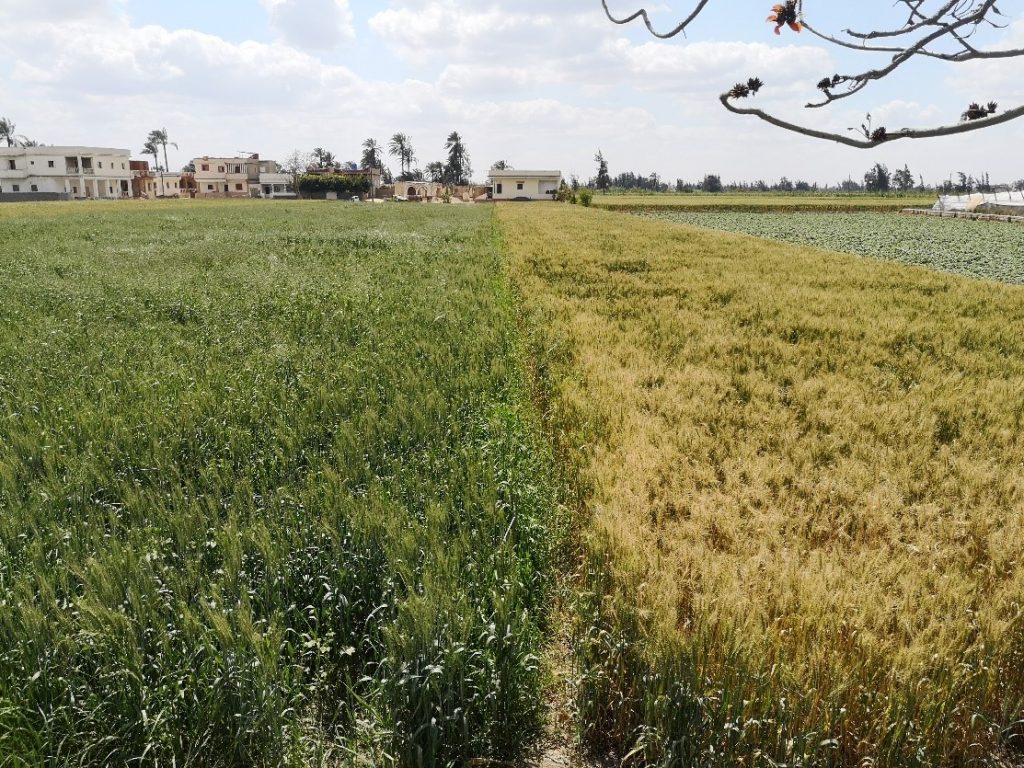
Egypt largely depends on importing wheat from Russia and Ukraine
Egypt is the world’s largest wheat-importing nation. As only less than half of the national wheat consumption can be met by domestic production, the remaining amount has to be imported. In 2020, Egypt imported about 12.5 million tons of wheat. 80% of these wheat imports came from Russia and Ukraine. In 2021, Egypt imported 6.1 million tons of wheat. 4.2 million tons came from Russia, with a value of $1.2 billion, representing 69.4% of Egypt’s total wheat imports. Imports from Ukraine amounted to 651,400 tons worth $649.4 million, representing 10.7% of the total imports. As a result of Russia’s invasion in Ukraine in February 2022, it is likely that Egypt will lose its main sources of wheat.
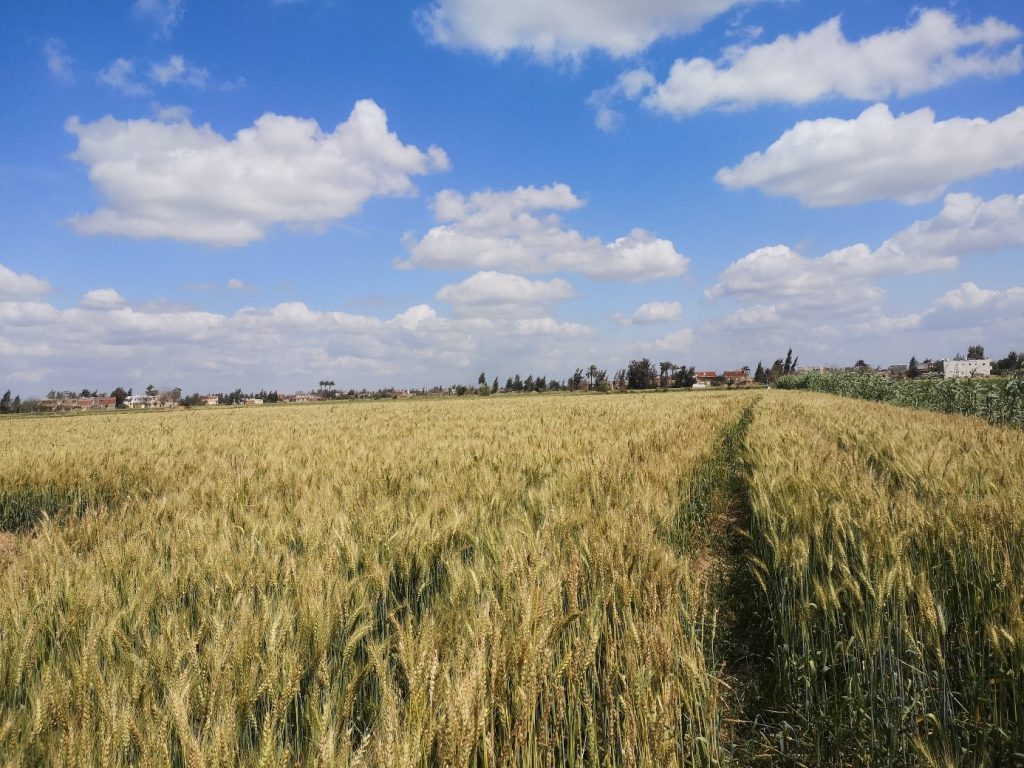
Egypt’s coping strategies for the breakdown of wheat imports
Mr. Nader Saad, the Egyptian cabinet’s spokesperson, told Hadith Al-Qahira TV show on Sunday, March 6, 2022 that Egypt’s current wheat supplies in its silos were sufficient for nine months including five months of strategic reserves and four months of domestic production. However, soon after the Ukraine war started, Egyptian citizens complained on social media about the increase of the prices of baladi bread on the private markets. The Egyptian Prime Minister Mr. Mostafa Madbouly declared in a press conference on March 9, 2022, that the price of wheat on the international market increased by 48% percent (to about 100$ per ton) two weeks after the war against Ukraine started. The Prime Minister then explained the government’s strategy to secure wheat demands in Egypt:
Last year 2021, the wheat-cultivated area was estimated at 3.2 million feddan (1.26 million ha). However, in this year, the total cultivated wheat area was estimated at 3.4 million feddan. This increase of 400 thousand feddan (168 thousand ha) was mainly added recently by reclaiming new areas, and we are planning to reclaim from 1 to 1.5 million feddan (420 to 630 thousand ha) in the coming years. In 2021, the government received 3.5 million tons of wheat from the domestic market, and the plan for 2022 before the Ukrainian ware was to receive 4 million tons. After the crisis, the government changed the plan and intends to receive between 5 up to 5.5 million tons by offering additional incentives to encourage farmers to deliver the largest possible amount of wheat during the harvest season. These incentives include accelerating the payment to farmers as soon as they supply wheat. In addition to that, the government is trying to depend more on other wheat sources such as France, Hungary, Bulgaria, and Australia.”
Egypt’s Prime Minister Mr. Mostafa Madbouly at a press conference in early March 2022.
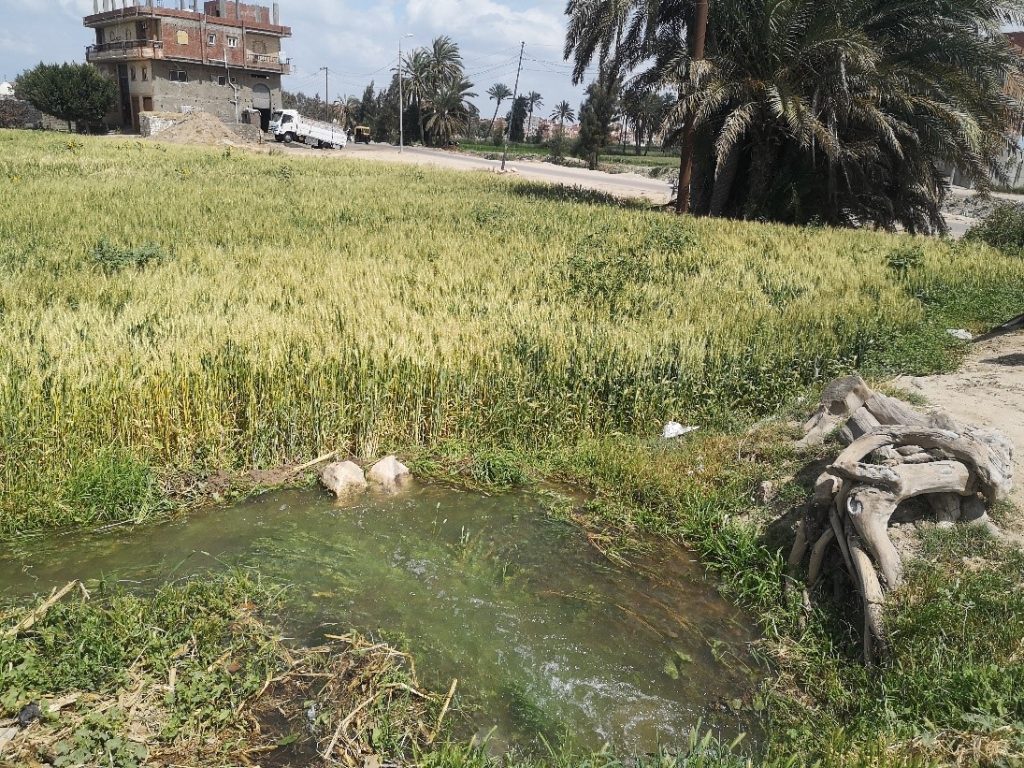
In addition, Mr. Al-Sayed Al-Qusair, the Egyptian Minister of Agriculture, said in a recent TV talk show about the governmental aim to increase the productivity per unit:
“We are creating a research committee within the Ministry of Supply to recommend incentives in order to encourage farmers to supply their wheat. These incentives include declaring the price and fixing it. Additionally, we increased the reclaimed land by 400 thousand feddan (168 thousand ha). And we elicit high-yield varieties.“
Egypt’s Minister of Agriculture Mr. Al-Sayed Al-Qusair in a recent tv talk show.
So the Egyptian government’s strategy to cope with the price increase and shortage of wheat due to the Ukraine war so far consists of: increasing the cultivated area, eliciting high-yield varieties, and finding new international wheat producers to import from. However, it was not indicated what procedures should be taken to increase the domestic production in the “old” land and how to support wheat-growing smallholders to adopt appropriate agriculture practices and new innovations.
How research can contribute to identifying bottlenecks and finding solutions
The PhD research project “Transition towards sustainable agriculture: The case of wheat-based production systems in Egypt” is part of the Right Livelihood College (RLC) Program at ZEF. The project aims to contribute to more sustainable agriculture in Egypt by determining the external pressures and system-immanent drivers impacting on wheat production and wheat self-sufficiency in Egypt. In this line, the project tries to identify the opportunities and challenges to attain wheat self-sufficiency in Egypt in a sustainable manner from a smallholder’s perspective. Read more in the blog post on this research here**).
First preliminary findings show that the average yield of the “old” land in the River Nile delta is 6.68 t/ha compared to the maximum yield in the new land, which is estimated by 6.26 t/ha. Additionally, the production costs in the “new” land are nearly two times higher than in the “old” land. From a wheat-growing smallholder’s perspective, there has been a significant drop in governmental support in the form of subsidized inputs and technical supply in the last two decades. Smallholders consider their wheat production being jeopardized by the main dependency on a fluctuating private market.
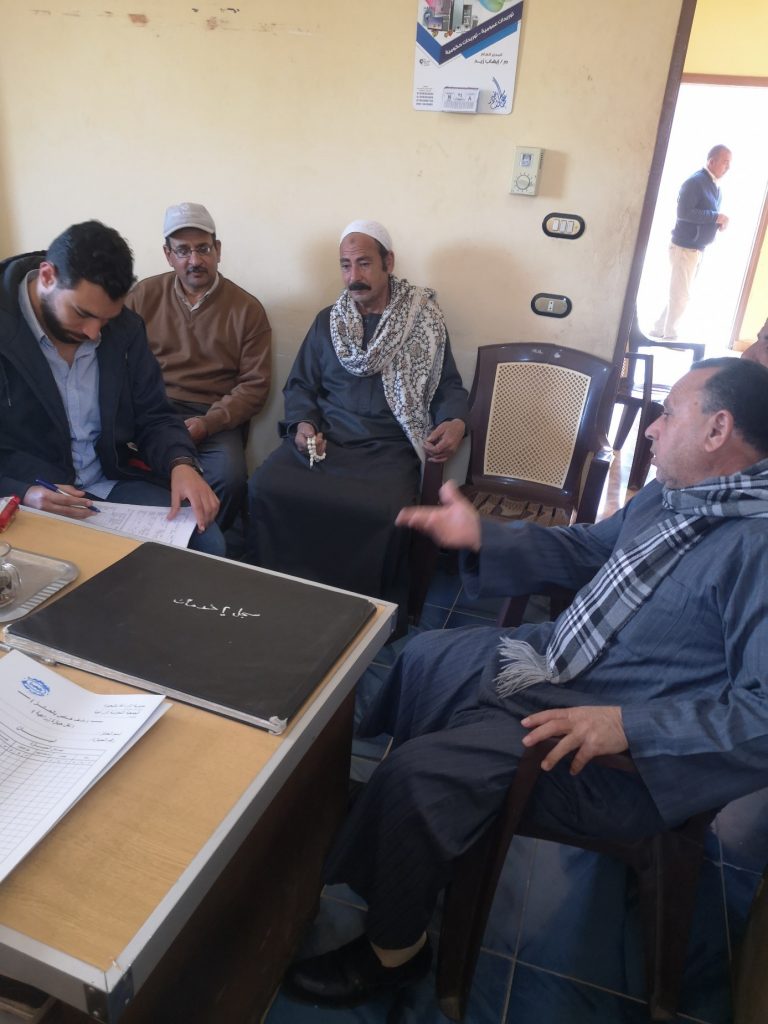
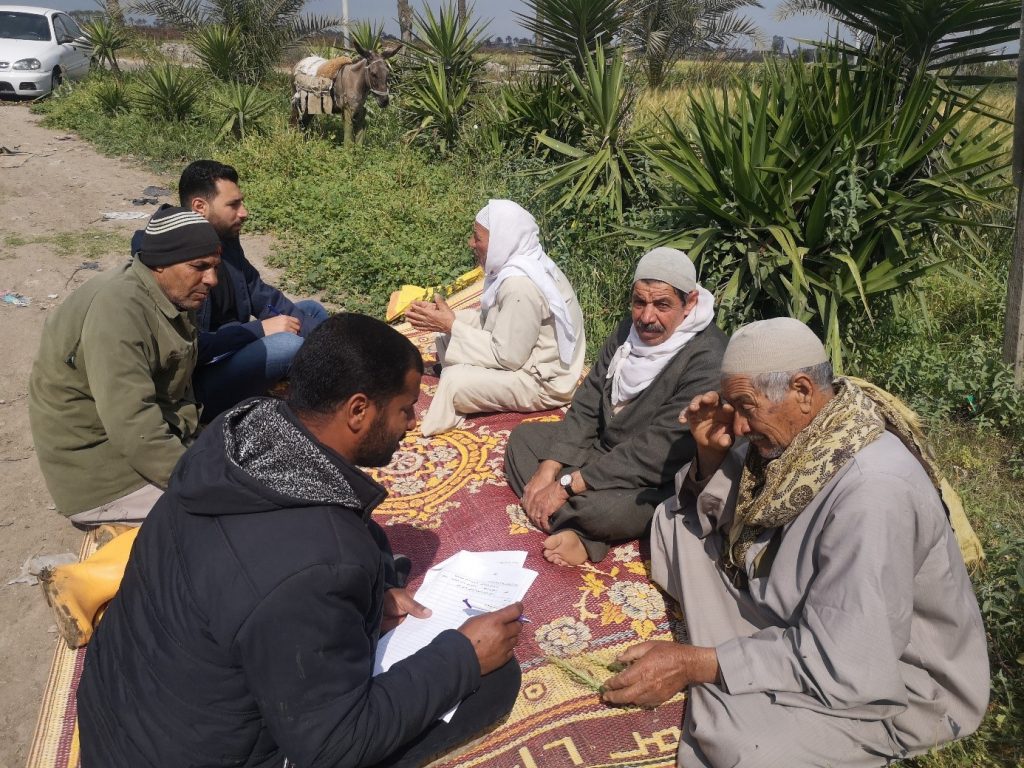
Smallholders often started to reduce their wheat production area and rather focus on more profitable cash crops such as clover. The clover cultivated area gradually increased in Egypt between 2011 and 2019 at the expense of the wheat-cultivated area. Many smallholders in Egypt do not see that growing wheat is economically feasible for them anymore; so they mainly continue growing wheat only for their own households’ consumption and for their animal feed, but not as a cash crop. Thus, the total wheat production area in Egypt has declined on the “old” land by an average of 2 percent since 2001. Smallholders also perceive high prices of fertilizers such as potassium and the delayed distribution of subsidized inputs as disincentives to grow wheat.
The pivotal but underestimated role of Egypt’s smallholder farmers
The Egyptian government mainly follows a horizontal approach to increase wheat production by extending the production area to “new” land (e.g. western desert agricultural project and west Al- Menya). In the meantime, the declaration of the Prime Minister to increase the domestic supply after the start of the Ukrainian war from 4 to 5.5 million for 2022 reflects the change in governmental approach, which used to rely mainly on the international market. In practice, however, it is questionable if the country can increase domestic supply to such an extent and in such a short time by a top-down price declaration and other incentives. And why did the government not provide the same incentives before, so domestic supply could have been increased and the country’s dependency on the international market supply reduced by now?
In reality, the Egyptian government rather supports large agricultural enterprises producing vegetables and fruits for export, rather than smallholders who produce wheat and other “traditional” crops. The government must give more long-term support to smallholders in general and specifically to those who produce the strategic crop wheat. That support would include: 1) providing wheat-growing smallholders with technical support and knowledge through agriculture extension, 2) providing smallholders with subsidized inputs on time, 3) declaring the national wheat prices before the growing season, 4) determining higher prices for smallholders. All these procedures would encourage millions of smallholders to increase their wheat-cultivated area and improve their productivity, which would directly lead to an increase in the overall domestic production. Additionally, given Egypt’s very limited cropland and water resources, it should rather follow vertical approaches, aiming at increasing yields per unit in parallel with horizontal approaches of reclaiming “new” land.
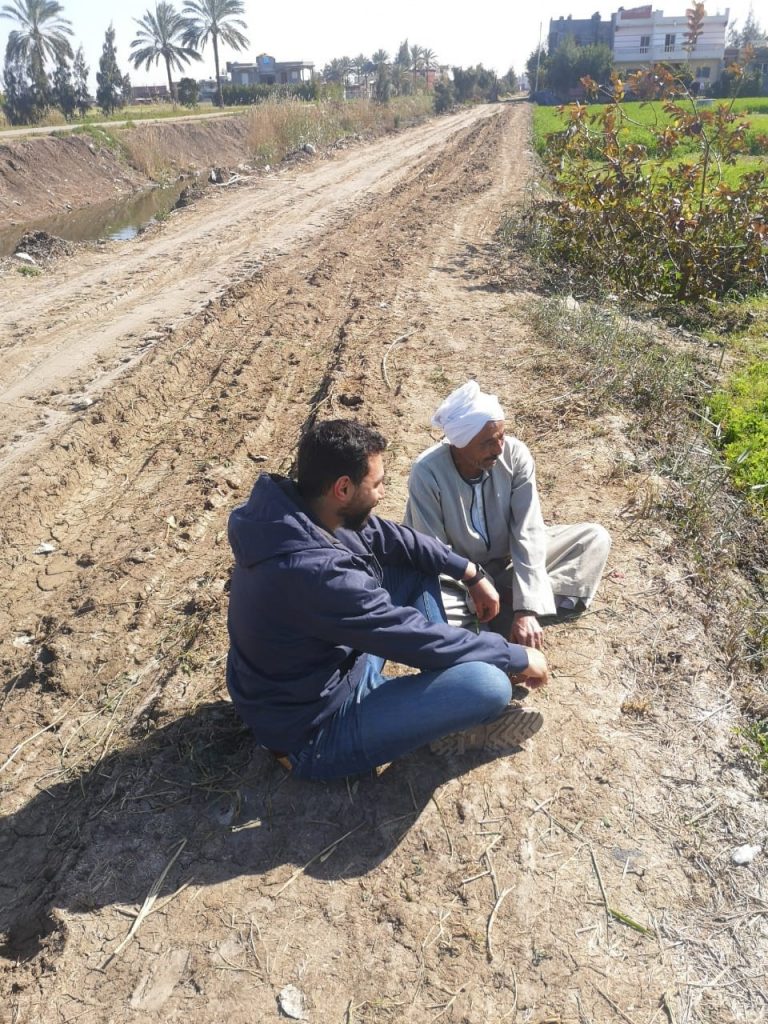
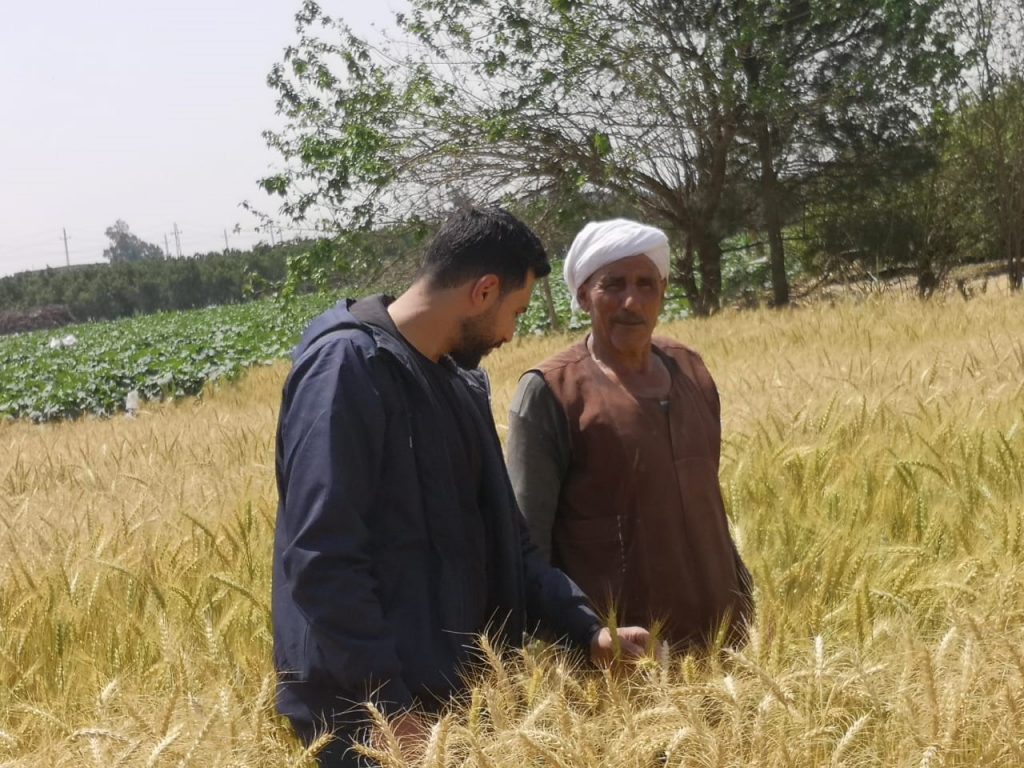
Finding a balance between “new” versus “old” land
Another question is whether the funds invested for developing agriculture on “new” land could have rather been spent on increasing the productivity in the” old” land. Agricultural land projects on “new” land often focus on high-value crops for export such as vegetables and fruits as the productivity of the traditional crops in the “new” land is relatively low and goes along with high production costs.
A better balance between domestic food production by smallholders and food imports has to be found. There should be more incentives for smallholders in the “old” land to grow wheat so baladi remains an accessible and affordable daily commodity for all Egyptians.
Ahmed Abdalla, doctoral researcher.
*) “New” land is referring to desert which is being reclaimed in different locations in Egypt. 97% of Egypt is desert. “Old” land are the basin and fertile area around the Nile River and in the Nile delta in the country’s north.
**) The results of the research project will determine the external pressures and system-immanent drivers impacting wheat production, productivity, and wheat self-sufficiency in Egypt. The data is currently analyzed and synthesized in detail.
About the author: Ahmed Abdalla is a junior researcher at ZEF and part of the Right Livelihood Campus Bonn program. His research is kindly supported by the German Academic Exchange Service (DAAD) and Fiat Panis. The research project cooperates with Heliopolis University and SEKEM Egypt.
Photos in this blog: taken or provided by Ahmed Abdalla.

